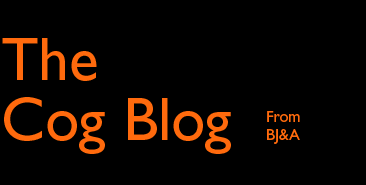This Much We Know
21 May 2025
It is 2008. At the asi Advertising Effectiveness event, Professor John Philip Jones (ex JWT, at this time at Syracuse University) is presenting early findings on the impact that advertising on the new ‘social media’ (Facebook was in the foothills with somewhere around 100 million users) by his client P&G has on their brands.
His conclusion: advertising designed to build and sustain brands does not work on social media. The SM sell at the time was all about building one-on-one relationships between consumers and brands; as Bob Hoffman was to comment no-one’s terribly interested to chat to a detergent.
It is 2024. Thinkbox, alongside Ebiquity, Essencemediacom, Gain Theory, Mindshare and Wavemaker release Profit Ability 2. 18 of the sharpest minds in media are listed as contributors (this excludes those at Thinkbox).
In their Executive Summary the authors write: ‘short-termism short changes brands’. It seems reasonable to conclude that they see ads on social media as promoting short-termism.
It is 2025. Peter Field, one of our greatest experts in understanding how advertising works, writes an article for ThinkTV in New Zealand: ‘To drive growth we must strengthen the brand’, and (quoting Karen Nelson-Field’s Amplified), ‘the value of an ad that is viewed for 10 seconds is around 8 times greater than one viewed for just 5 seconds’.
A few weeks later, at Media360 Field presents research for Newsworks that calls out ‘the madness of brands moving ad money to social media from newsbrands’.
We seem on fairly secure ground to conclude that TV and other more ‘traditional’ media forms work better in brand building than social media.
Now for the gainsayers.
All the evidence that TV works comes from those funded by the TV companies. Same for newsbrands.
And where does the evidence that (to pick on one at random) Facebook advertising works come from? How much independent validation and verification is there around any data produced by the social media platforms?
Look back a few paragraphs. Thinkbox’s work is co-authored by 18 experts. Are they being held hostage somewhere?
Much of Peter Field’s work is informed by analysis of IPA cases. Can Peter be bought off by sponsors? It seems unlikely.
Moving along the line of gainsayers, if a medium doesn’t work it’s the fault of the creatives’ use of it, all we do is provide the audience.
What audience? Where do social media audience numbers come from? Who validates them? Who examines them? What if they aren’t true? What about the time FB claimed to reach more of a demographic than there are actually people within that demographic?
What about fraud?
What about definitions – half a screen for 2 seconds equals an exposure. Really? What about Amplified’s findings? Shouldn’t we take account of effective, or attentive exposure, not some random 2-second number dreamt up by the social media platforms to suit the fleeting way that most use their channels?
The last Cog Blog listed some of the contradictions in our thinking about advertising, including that adspend doesn’t correlate with what we know works.
The point of this post is to highlight how much we’ve learnt over time and forgotten.
There is a lack of institutional memory in this business.
It is not a matter of everything moving so fast that past learnings are irrelevant. This is about not knowing how to do the job.
Yes, core principles need to be reviewed within the context of today, but whenever that happens the thought occurs that maybe David Ogilvy, Bill Bernbach and Simon Broadbent knew instinctively what they were doing.
Last year’s Profitability 2, like Amplified’s work, and much more, likely won’t reach the parts other studies cannot reach (old taglines need all the help they can get). Yet they should be foundational texts, required reading for everyone.
In 2014 I was a judge of the early stages of the IPA Ad Effectiveness Awards.
The winner in ‘my year’ was Fosters with their beach hut campaign, ‘Good Call’.
The case study of the entry toured. I went to an IPA session for students featuring the agency, Adam and Eve, the brand team, the data, the story. Hugely impressive.
A few months later Fosters junked the campaign.
Four years later they brought it back.
It would be interesting to evaluate the cost of the decision to junk and re-introduce the campaign.
Just last week VCCP’s Will Parrish, with Amplified’s Karen Nelson-Field presented some fascinating research called ‘Hacking the Attention Economy’.
One stand-out conclusion: if you’re skilled enough to have developed a distinctive brand asset (DBA) you don’t need as much attention to maintain it as you would if ‘all’ you had was an average ad.
DBA’s are valuable assets; they save you money.
VCCP are good at this – CompareTheMarket and Meerkats, O2, Cadbury and purple come to mind. And as an agency with an in-house media function they make the point that ignoring DBA’s in planning (much more likely if creative and media work separately from each other) is inefficient.
Smart marketers and their Boardroom colleagues know when they have a winner, they don’t chop and change, and they reap the benefit.
Most of us don’t learn; and it costs us. Not a good call.
